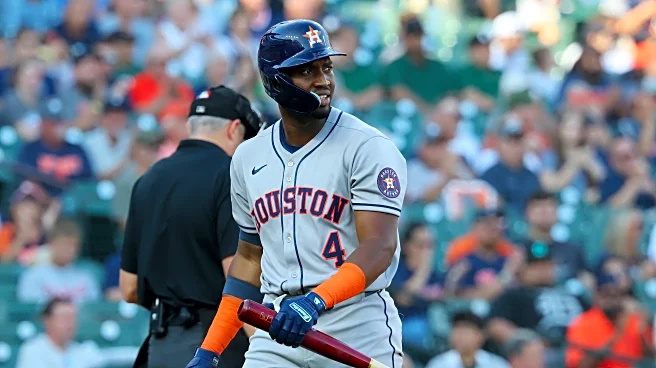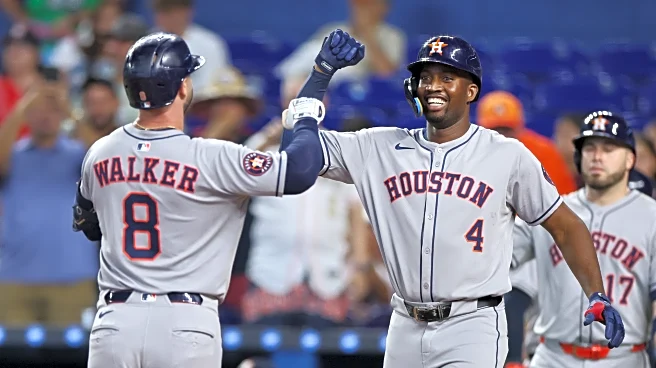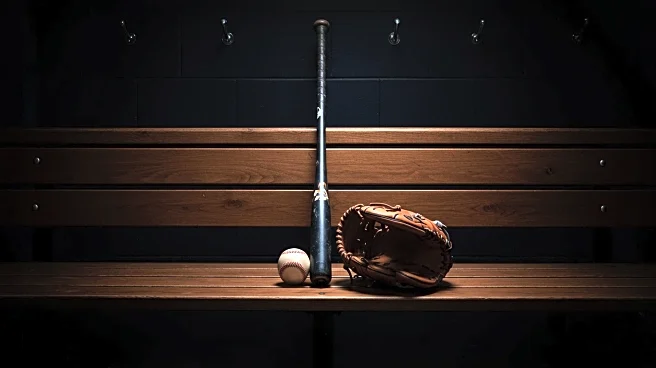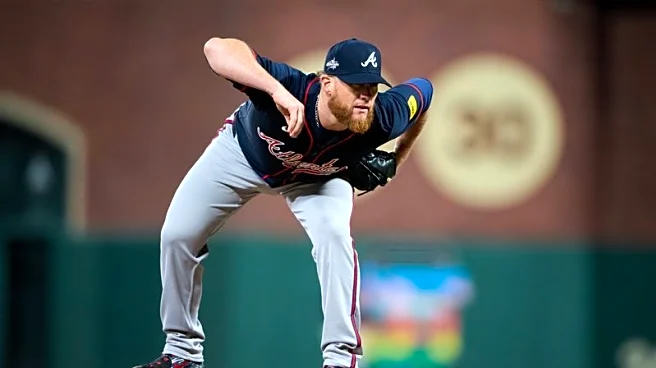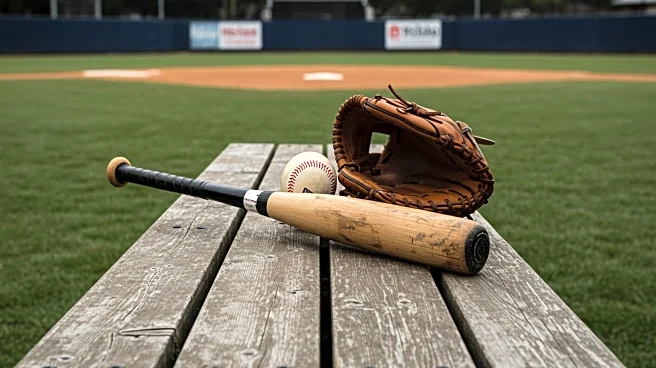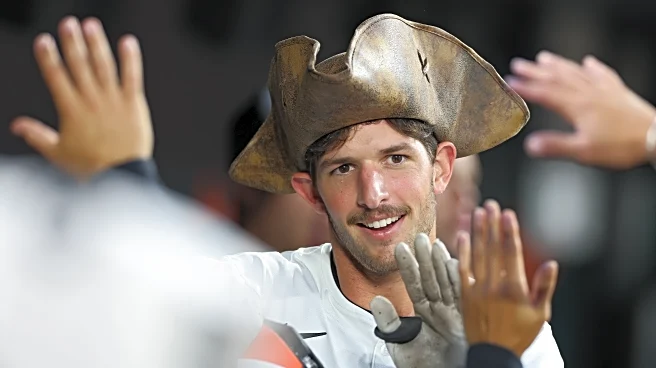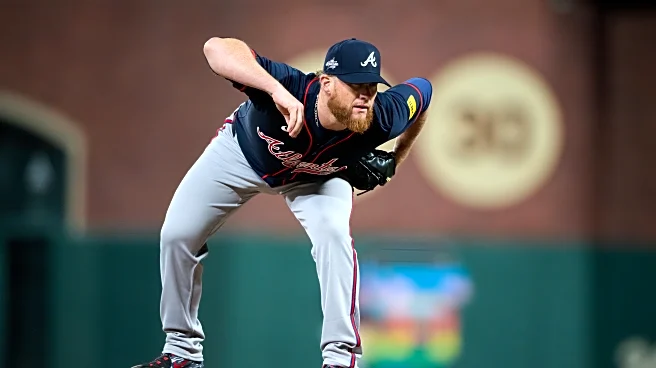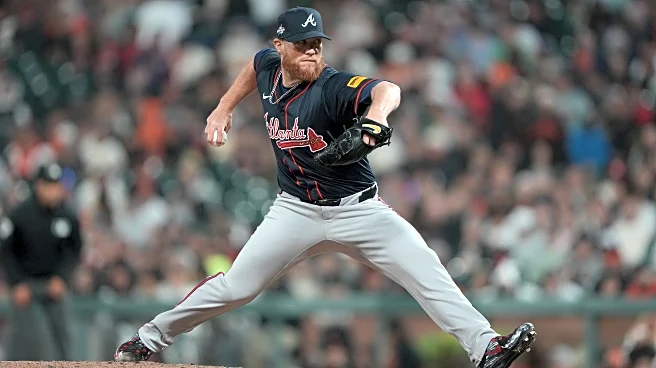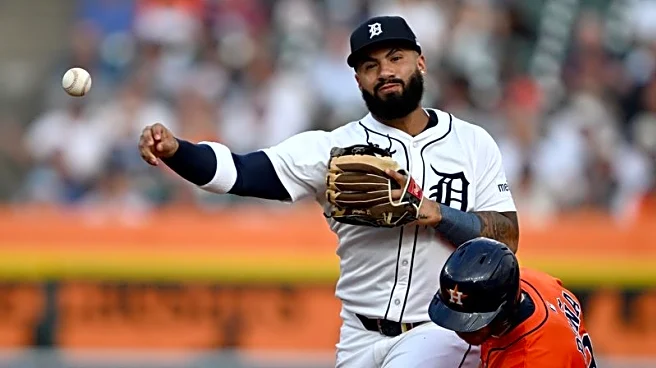
Let’s take up a few short topics with an Astros’ emphasis.
Yordan Alvarez
Yordan Alvarez’s rehab starts in the minor leagues appears to be going well. It raises our expectation that Yordan will be in the major league roster very soon. Here are some highlghts from last night,
With Alvarez on the active roster, the lineup looks much longer to opposing managers. For example:
SS Pena 3b Correa 2d/LF Altuve DH Alvarez 1b Walker C Caratini / Diaz RF Smith / Sanchez LF Dubon / Sanchez CF Melton / McCormick
If you believe
in batting order synergy, we can hope that Alvarez will improve the pitches seen by Walker and Altuve. I assume that Alvarez’s usage will be cautious, i.e., with frequent days off. But if Alvarez can return at just 80% or 90% of his career offensive stats, that might rejuvenate the lineup.
The Fangraphs depth chart is the starting point for FG playoff odds. The rest of season projection for Yordan Alvarez: 23 Games 100 PA .931 OPS, 157 wRC+.
Talking about FG Playoff Odds, the Astros currently have a 56.5% probability of winning the AL West, which is as high as the odds have been in several weeks. The odds of making the playoffs are 89.3%.
Craig Kimbrel
Reportedy the Astros have signed Craig Kimbrel. At 37 years old, Kimbrel is no sure thing as a bullpen pick up. But, since the loss of closer Josh Hader, sometimes risks have to be taken. And Kimbrel doesn’t need to be better than Hader. He just needs to be better than pitchers like VanWey or Dubin in the bullpen.
Just to be clear, Kimbrel has had a great career, ranked 2d among active pitchers in career saves and games finished. He has appeared in 9 all star games and pitched in 30 post season games. Of course, Kimbrel at age 37 isn’t the same player as the top line closer of his earlier years.
I admit that I have been watching Kimbrel’s stats over the last couple of months—mostly because he has been given very little opportunity in the majors this year. He has one inning pitched (for the Braves) and allowed no runs. Frankly that single inning is too small a sample to tell us much about Kimbrel. He has pitched 42 games (39 innings) in the minor leagues this season (Rangers and Braves). His stats are decent in those minor league appearances (3.00 ERA 11.7 K/9 and 4.85 BB/9). They indicate that he can still strike out batters at a decent rate but will walk a tight rope with his BBs. And that sort of characterizes his career over the last few years. Kimbrel’s last really good season was with the Philiies in 2023 when he had a 3.26 ERA (3.28 x-ERA) and 23 saves. He pitched 71 games that season, and it’s no coincidence that his “last really good season” occurred when he kept his BB/9 below 4.
Kimbrel’s 2024 season in Baltimore ended with his release late in the season. He again saved 23 games for the Orioles, but his blown saves (6) got him a ticket out of town. 2024 was a tale of two seasons. He was quite good in the first half for Baltimore: 2.80 ERA and a sparkling .150 Batting Average Against. But the bottom fell out in the second half of 2024: 10.59 ERA and .309 batting average against.
Why haven’t teams promoted Kimbrel to the majors this season. My guess is that there are question about his fastball velocity. In that single inning with the Braves, his FB velocity was 91.6. His average FB velocity with the Orioles was 94. I would feel better about his ability to succeed if he could post velocity closer to the 94 mph figure of 2024.
Over his career, Kimbrel’s FB has always been a plus pitch, according to Stuff+. I can remember when Brent Strom used to praise Kimbrel’s 4 seam FB at the top of the zone. Even in his single inning with the Braves this season, his FB Stuff+ was 111. Even in his struggling Orioles season in 2024, he had an overall Stuff+ of 106 and Pitch+ of 105. His command as measured by Location+ will be the determining factor. In his good season with Philly, Kimbrel’s Location+ was 104, giving him a Pitch+ of 117.
In addition to his fastball, an effective version of Kimbrel also throws a good slider (110 Stuff+ in 2024) and a swing and miss knuckle curve (117 Stuff+ in 2023). He hasn’t thrown a sinker since 2017 and he has minimal history of throwing a change up. It will be interesting to see what changes, if any, the Astros’ pitching gurus make in his repertoire and sequencing.
I could maybe see Kimbrel putting together a Okert type rebound season—which would be helpful if it happens.
Watching Batters Take Strikes Over the Middle
My next topic isn’t strictly Astros-related. But the topic intrigues me. Ben Clemens looks at meatballs over the middle-middle of the plate taken for strikes. In particular, he focuses on middle-middle meatball punch outs. In Astros’ game threads, you will see repeated complaints about hitters taking middle-middle pitches for strikes—and if it results in a strike out, the irritation is more palpable.
The interesting part of Clemens conclusion runs counter to our intuition. The gist of his conclusion is that pitchers can be very good throwing meatball strikes looking and hitters taking said meatballs for punch outs are also very good. As he says, “the current state of the world, where meatball punchouts are an indication of good pitching – and of good hitting.” How can this be?
Let’s start with the top 10 pitchers at throwing middle-middle strikeouts looking. The list is led by Jeremy Pivetta and includes Hunter Brown. Besides Pivetta and Brown, the list of exceptional pitchers includes Skenes, Crochet, Kikuchi, Gore, and Suarez.
It also turns out that the top 10 hitters who strike out looking on middle-middle pitchers includes Ohtani and are largely very good hitters. As Clemens writes: “A nine-man lineup of the top nine on this list would be the best offense in baseball, with an average 123 wRC+.“
First, the fact that good pitchers throw middle-middle pitches in a strike out count makes some sense to me. If a pitcher has several wipe out pitches, the hitter will probably guess wrong on what to expect on many occasions. And basically the ability to garner swings and misses inside the zone is a “good pitcher” skill. If the pitcher believes his pitch can induce a whiff inside the zone, it’s not surprising that he will throw some middle-middle pitches.
But what about the good hitters taking those pitches? The answer, according to Clemens, lies in quality of contact. This group of hitters are able to do great damage on balls in the zone. But the ability to excel at doing such damage is associated with patience and pitch selectivity. For example, a hitter like Ohtani is more concerned with avoiding chase swings, likely to produce failure, than the occasional meatball looking, because if he can get high exit velocities on most of his in zone swings, he will come out ahead. In other words, the occasional meatball looking is an unfortunate by product of the patient method.
Since the great hitter is looking to inflict damage, he may be looking for the specific pitches he is most likely to hit hard. Sometimes the middle-middle pitch isn’t the type of pitch he was looking for, and fails to pull the trigger. It happens occasionally, but the overall approach provides far more successes than failures.
Thoughts?


